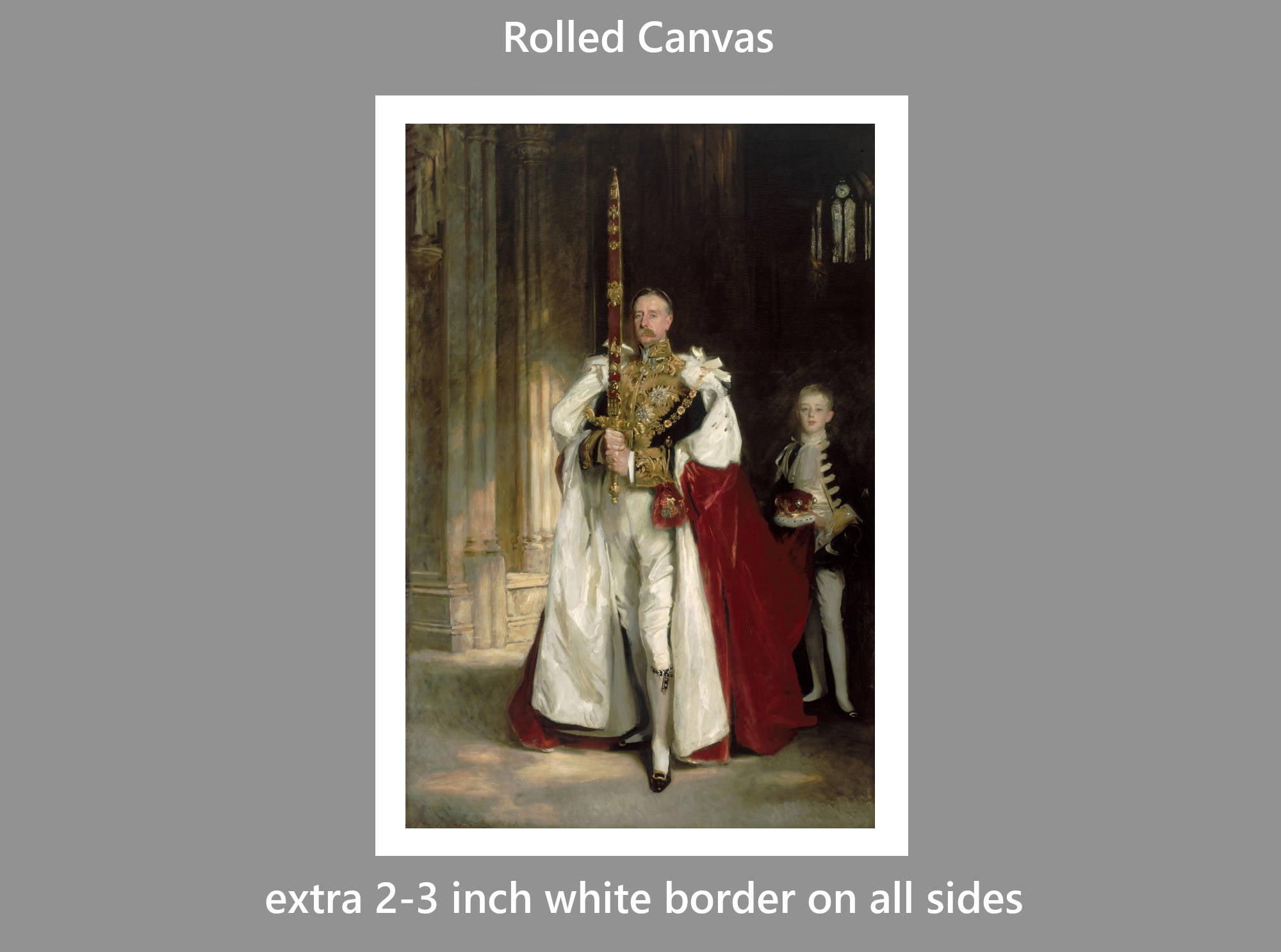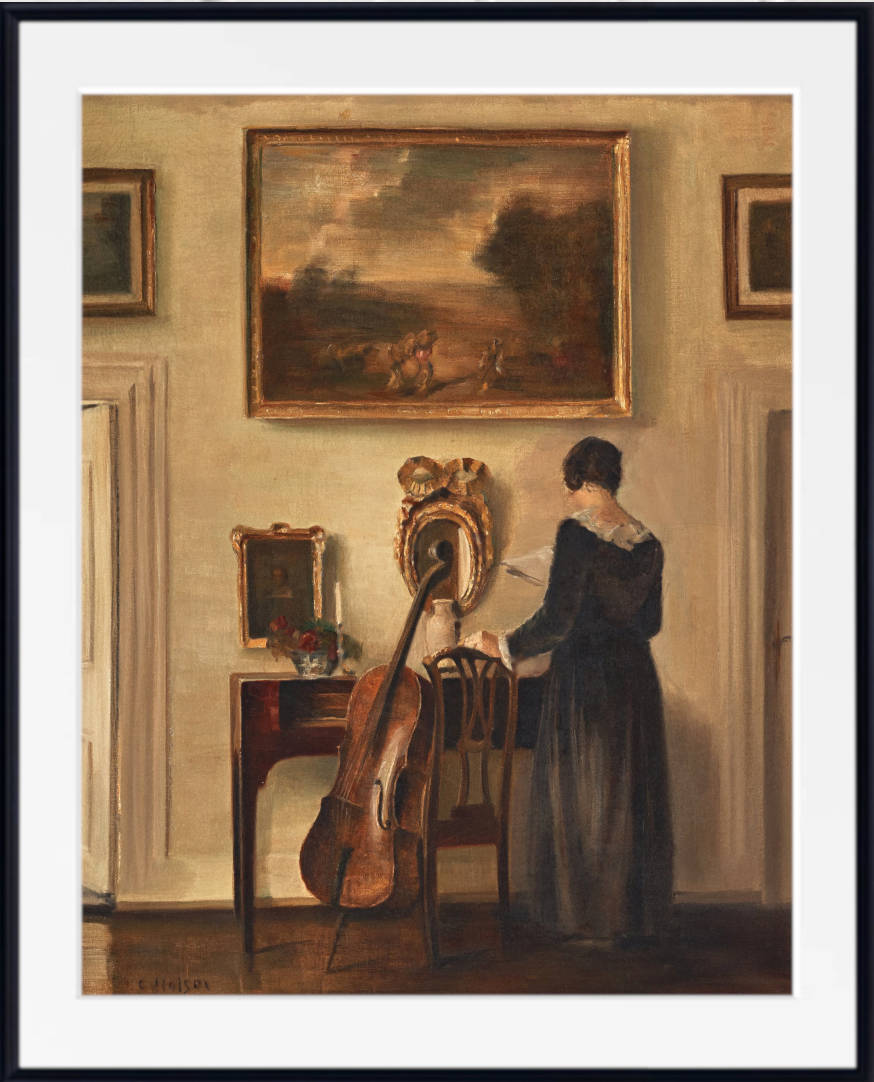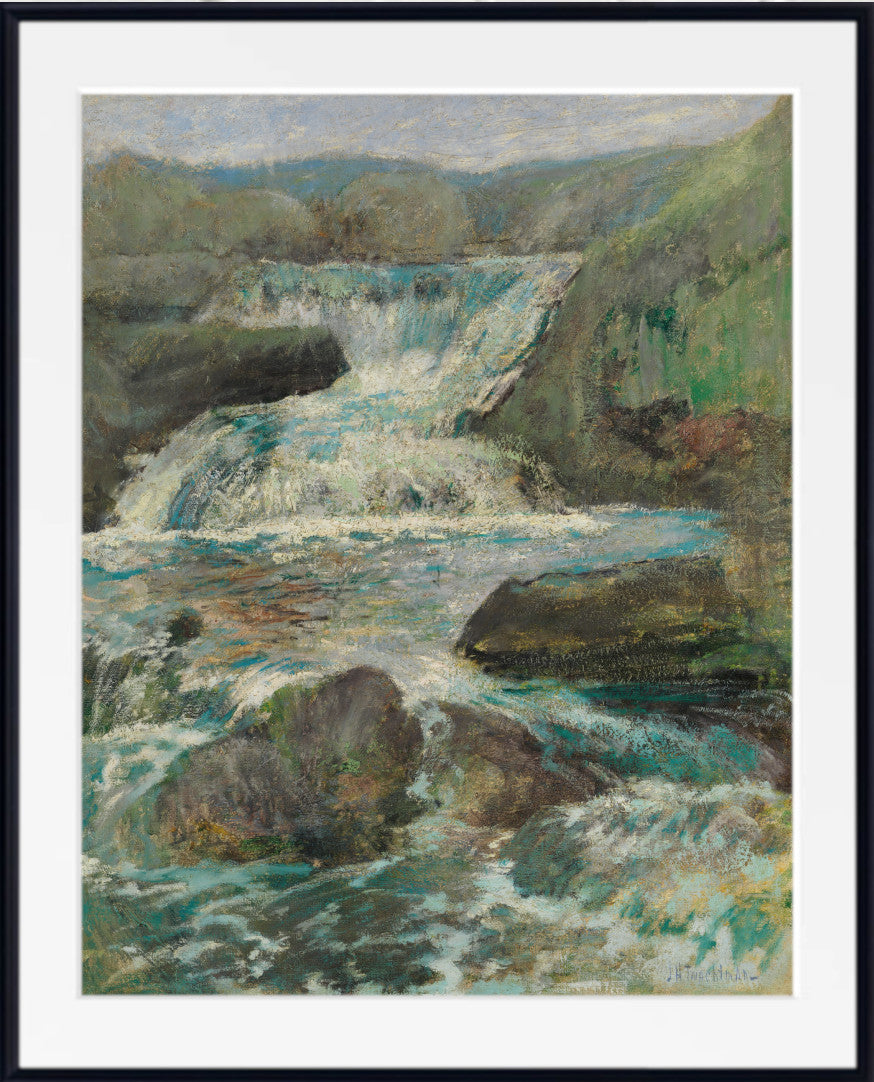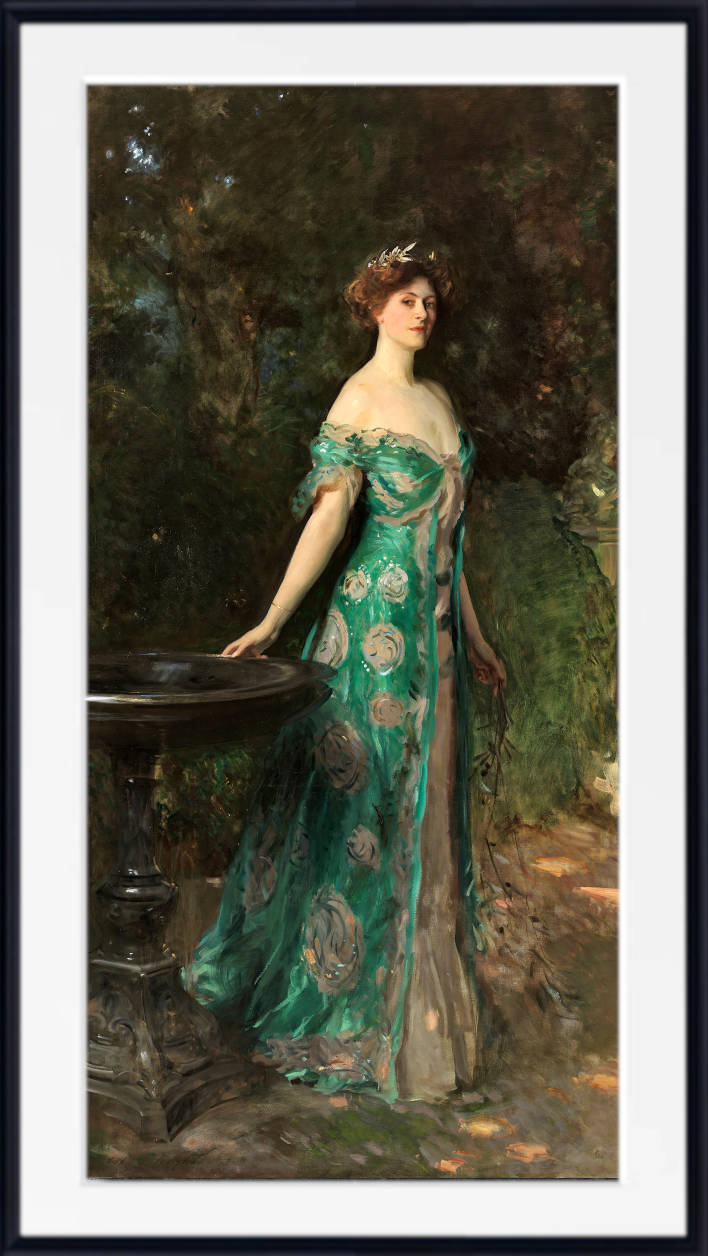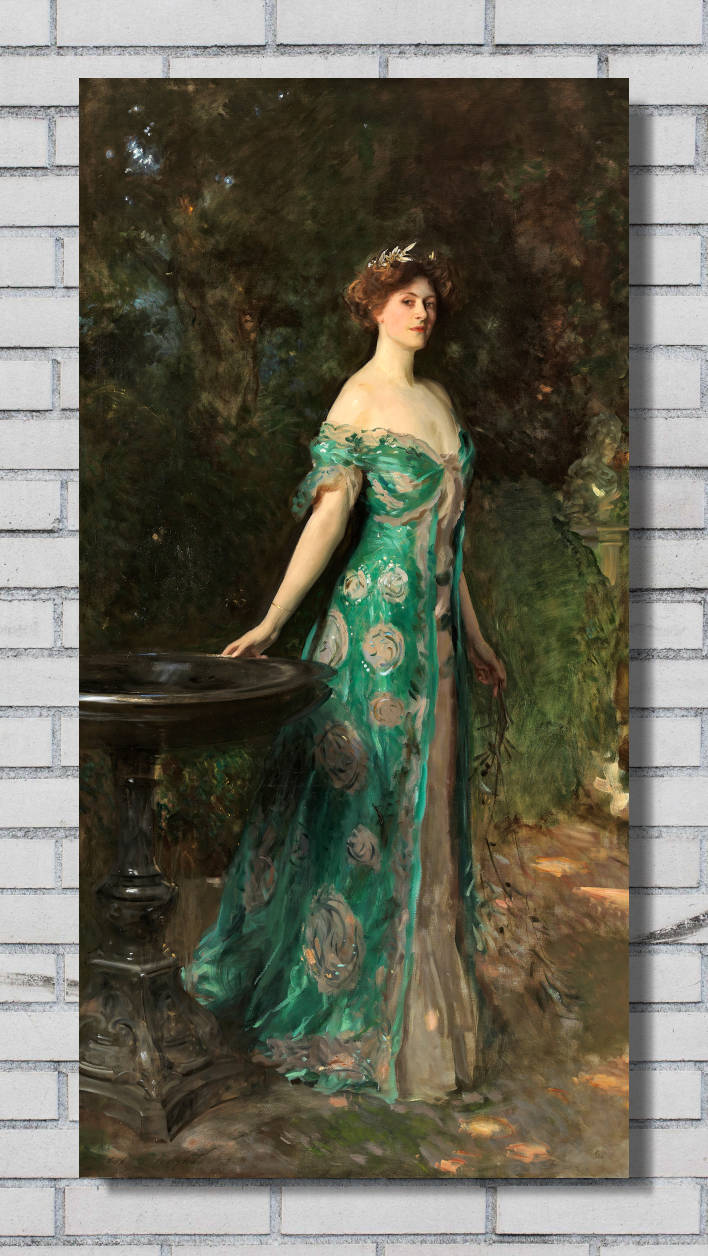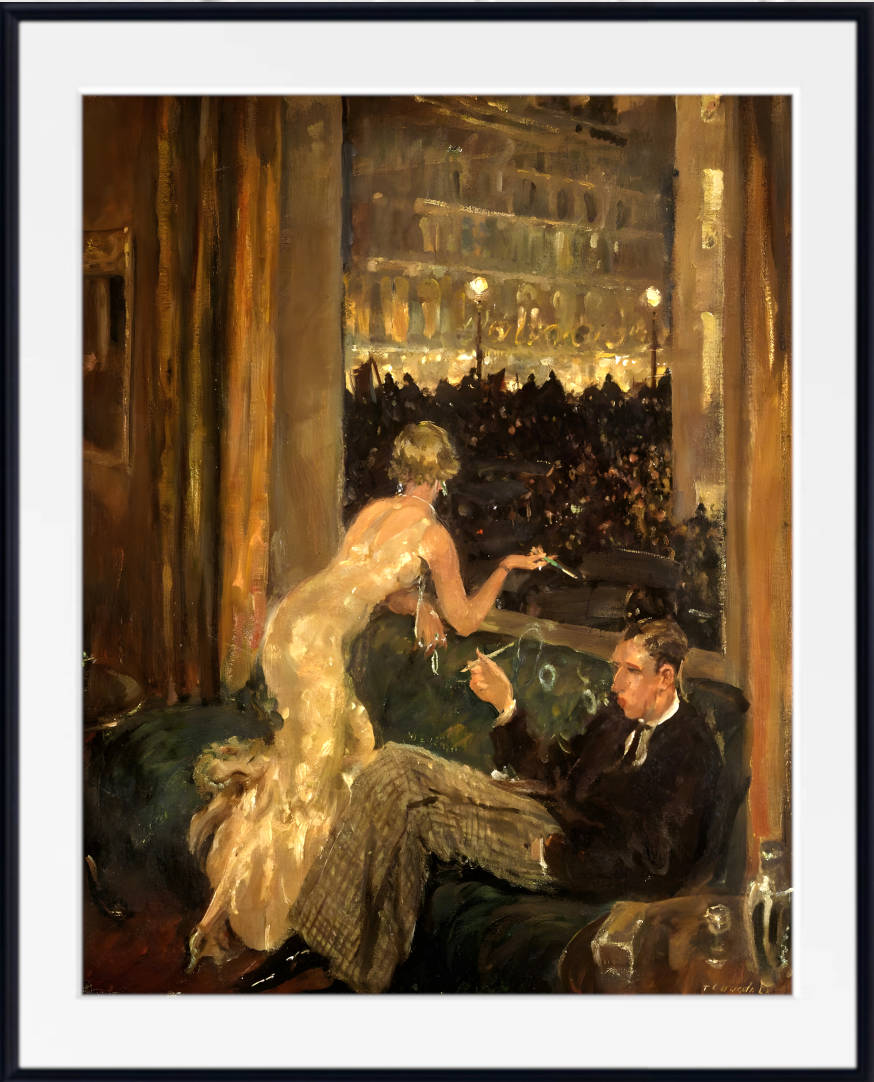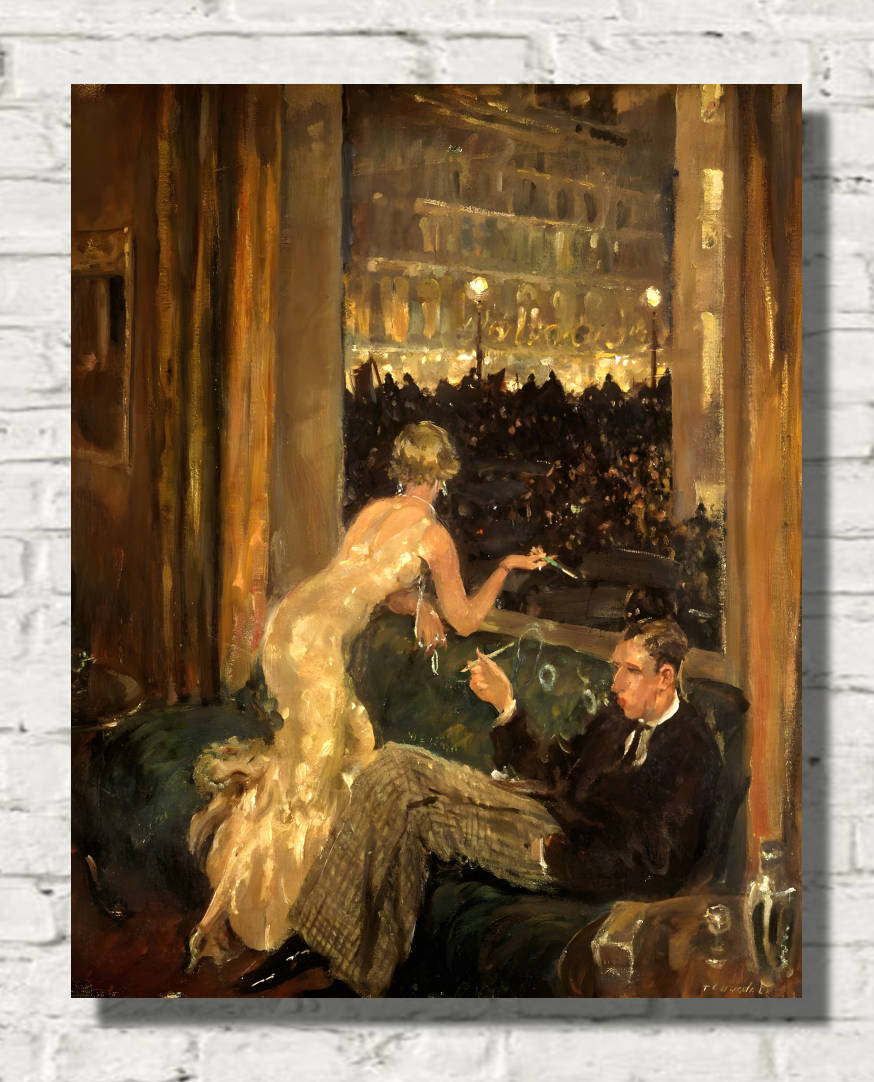John Singer Sargent Print, Marquess of Londonderry, Sword of State
John Singer Sargent Print, Charles Stewart, Sixth Marquess of Londonderry, Carrying the Great Sword of State at the Coronation of King Edward VII, August, 1902, and Mr. W. C. Beaumont, His Page on That Occasion
Marquess of Londonderry, Carrying the Great Sword of State
John Singer Sargent’s portrait, “Charles Stewart, Sixth Marquess of Londonderry, Carrying the Great Sword of State at the Coronation of King Edward VII, August, 1902, and Mr. W. C. Beaumont, His Page on That Occasion,” captures a moment of grandeur and ceremonial dignity. Painted in 1904, this oil on canvas reflects Sargent’s masterful ability to convey both the grandeur of historical events and the personalities of the individuals involved.
The painting depicts Charles Stewart, the Sixth Marquess of Londonderry, in full ceremonial regalia, carrying the Great Sword of State during King Edward VII’s coronation. Standing tall and regal, the Marquess is adorned in a lavish robe trimmed with ermine, which emphasizes his status and the formality of the event. His composed expression reflects the solemnity of his duty, symbolizing the importance of the moment and the weight of history resting upon him.
To his side is Mr. W. C. Beaumont, the Marquess’s page, dressed in red, with his youthful demeanor contrasting the dignified presence of the Marquess. Sargent uses this juxtaposition of youth and experience to further highlight the ceremonial hierarchy. The intricate details of the sword and the luxurious fabric of the attire showcase Sargent’s remarkable attention to texture, form, and light.
The painting is a celebration of British aristocratic traditions and Edwardian pomp. Through his characteristic loose brushwork and command of light, Sargent not only captures the external opulence but also imbues the figures with a sense of inner life. The Marquess’s posture and expression suggest an individual who is both aware of his prestigious role in this historic event and attuned to the gravitas of his responsibility.
This portrait stands as a testament to Sargent’s skill in immortalizing moments of historical significance, elevating them into timeless works of art.
John Singer Sargent – The Artist
John Singer Sargent (January 12, 1856 – April 14, 1925) was an American expatriate artist, considered the “leading portrait painter of his generation” for his evocations of Edwardian-era luxury. He created roughly 900 oil paintings and more than 2,000 watercolors, as well as countless sketches and charcoal drawings. His oeuvre documents worldwide travel, from Venice to the Tyrol, Corfu, the Middle East, Montana, Maine, and Florida.
He was born in Florence to American parents, and trained in Paris before moving to London, living most of his life in Europe. He enjoyed international acclaim as a portrait painter. An early submission to the Paris Salon in the 1880s, his Portrait of Madame X, was intended to consolidate his position as a society painter in Paris, but instead resulted in scandal. During the next year following the scandal, Sargent departed for England where he continued a successful career as a portrait artist.
From the beginning, Sargent’s work is characterized by remarkable technical facility, particularly in his ability to draw with a brush, which in later years inspired admiration as well as criticism for a supposed superficiality. His commissioned works were consistent with the grand manner of portraiture, while his informal studies and landscape paintings displayed a familiarity with Impressionism. In later life Sargent expressed ambivalence about the restrictions of formal portrait work, and devoted much of his energy to mural painting and working en plein air. Art historians generally ignored artists who painted Royalty and “Society” – such as Sargent – until the late 20th century
All prints are made using archival art stocks and UV pigment inks to give up to 200 years life. Prints are sold unframed and unmounted.




